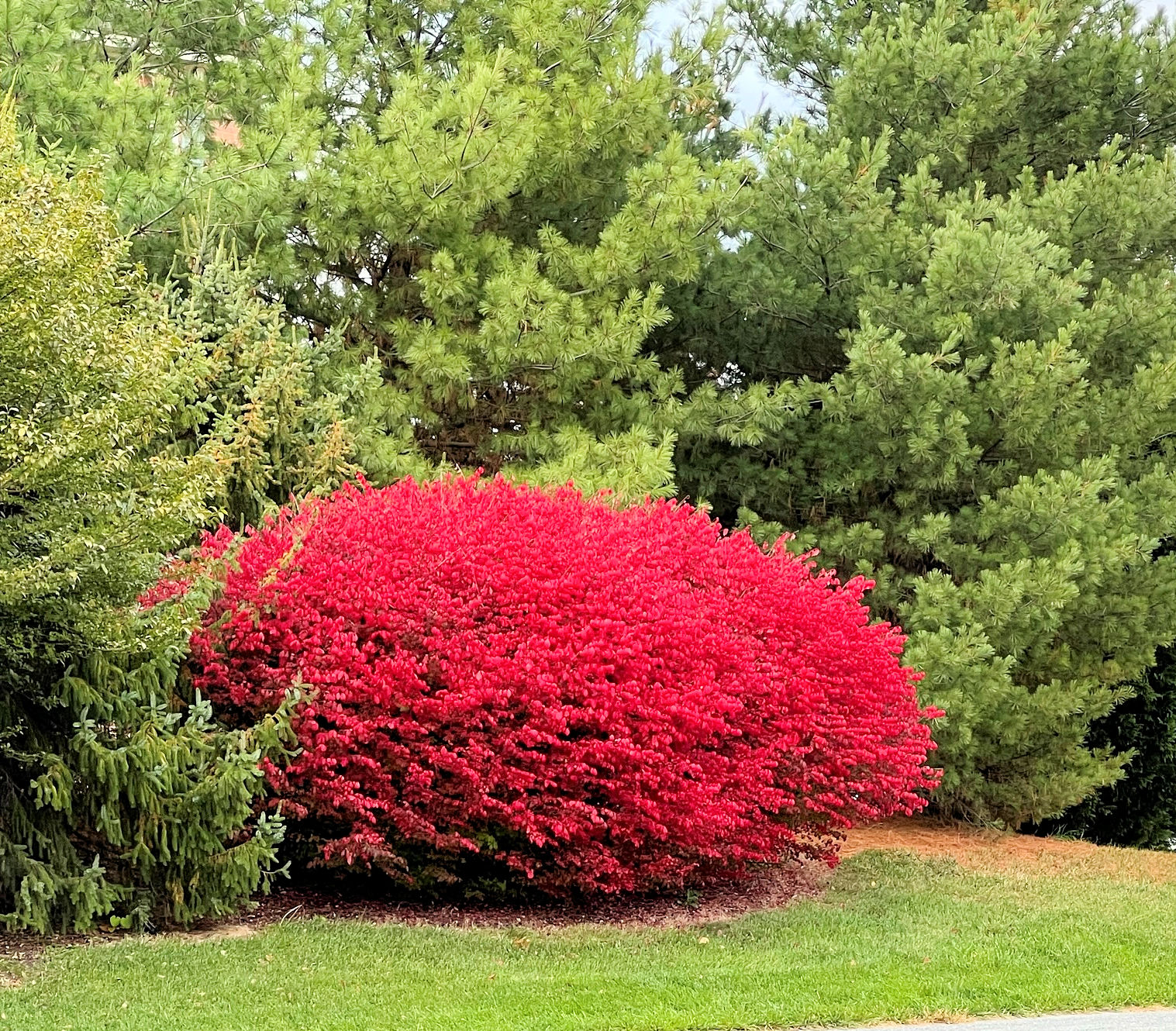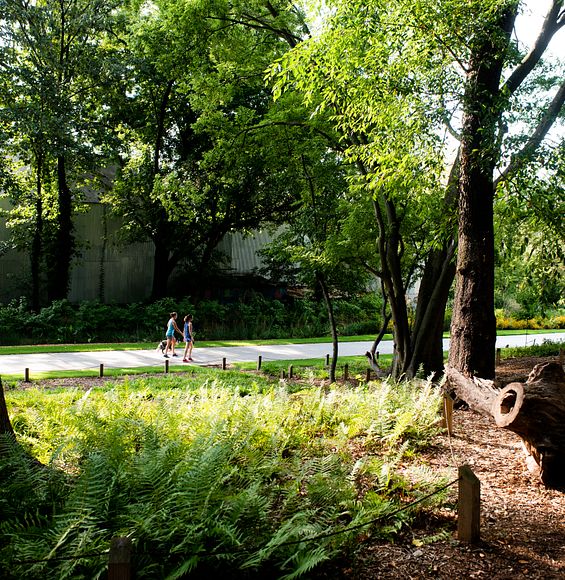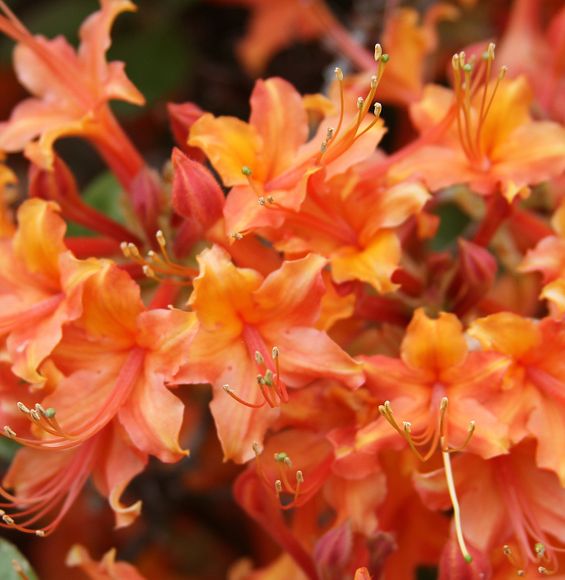These recommendations are primarily for homeowners and communities that would like to start working in their neighborhood greenspace. For each species we recommend herbicide-free control methods, but have added an herbicide option for some species for those who are comfortable using them. These methods were selected while keeping in mind limiting soil disturbance, reducing herbicide use, and avoiding harm to other species that may be present whether they be other plants/animals. Manual removal is possible for all of them if you have the time. If the infestation is overwhelmingly severe or these tips aren’t proving effective, we suggest you consider qualified professional services.
Euonymus alatus – Georgia EPPC Category 4 (naturalized in Georgia or in need of further information)
For certain woody invasive plants that have shallow roots, uprooting is an easy method of control. Some woody invasive trees and shrubs have deeper tap roots that make hand pulling difficult. If the trunk has a diameter of less than 1” hand pulling could be a viable option.
If the diameter is between 1-3”, try using an uprooter (a.k.a., “Pullerbear”). These tools will save your back (and are very satisfying to use) and are a great choice for those who are trying to avoid using any herbicides.
Hey there! If you’re dealing with an invasive burning bush (Euonymus alatus) taking over your yard, I feel your pain. As someone who’s helped many gardeners tackle this stubborn shrub, I’ll share everything you need to know about getting rid of it effectively and permanently.
What Makes Burning Bush So Problematic?
Before we dive into removal methods let’s understand why this plant needs to go
- Not native to US (originated from Northeast Asia, Japan, and China)
- Spreads aggressively through bird-dispersed berries and wind
- Berries are poisonous to pets and some birds
- Can grow 5-20 feet tall if left unchecked
- Outcompetes native plants
- Takes over landscapes quickly
Identification Tips
To make sure you’re targeting the right plant
- Green leaves during growing season that turn bright red in fall
- Leaves are simple, elliptical, and grow opposite each other
- Small greenish flowers that develop into red-purple berries
- Distinctive winged stems/branches
- Usually grows 5-10 feet tall but can reach 20 feet
Effective Removal Methods
1. Manual Removal
Best for smaller bushes (under 1-inch diameter stems):
- Hand pull when soil is moist
- Remove ALL roots to prevent regrowth
- Shake dirt from roots thoroughly
- Dispose of ALL plant parts properly (don’t compost)
For bushes 1-3 inches in diameter
- Use an uprooter tool (aka “Pullerbear”)
- Great for avoiding herbicides
- Saves your back from strain
2. Cut and Leave Method
For larger bushes:
- Cut stem 1-foot to waist height above ground
- Remove new growth immediately when it appears
- Continue cutting regrowth until roots starve
- Monitor area for several years
3. Chemical Treatment Options
If you’re comfortable using herbicides:
Cut Stump Method:
- Cut bush close to ground (under 1 inch if possible)
- Apply herbicide within 5 minutes of cutting
- Use 20-50% glyphosate solution or triclopyr
- Add dye marker to track treated areas
Foliar Spray Method:
- Best for bushes under 5 feet
- Apply in late summer/early fall
- Use glyphosate or triclopyr-based herbicide
- Ensure complete leaf coverage
Basal Bark Treatment:
- Apply triclopyr mixed with oil
- Treat lower 12-18 inches of stems
- Can be done year-round except spring
Prevention Tips
To stop burning bush from coming back:
- Monitor treated areas regularly
- Remove new seedlings immediately
- Don’t plant burning bush in landscapes
- Choose native alternatives instead
- Clean up ALL berries and plant debris
Important Tips for Success
- Be persistent – complete removal often takes multiple seasons
- Combine different removal methods for best results
- Check local regulations before using herbicides
- Wear protective gear when handling chemicals
- Consider hiring pros for large infestations
FAQs
Q: When’s the best time to remove burning bush?
A: Any time except during extreme heat/drought. They handle cutting well year-round.
Q: Will burning bush die if I just cut it down?
A: Nope! You’ll need to either remove roots or continue cutting regrowth until roots die.
Q: How do I stop it from spreading?
A: Remove flowers before they form berries, clean up fallen berries, and monitor for new seedlings.
Note: While we aim to provide accurate info, always follow local regulations and safety guidelines when removing invasive plants.

Eastside Azalea Collection
Despite the native azalea holding the title of Georgia’s State Wildflower, it is underused in the landscape. The Atlanta BeltLine Arboretum is now home to the largest public native azalea collection in the Atlanta Area with over 300 azaleas on display. The collection highlights over 25 species, cultivars, and varieties, and is home to all 13 azaleas native to the state of Georgia. This collection focuses on named cultivars (varieties that have been selected for depending on color, size, bloom time, etc.) within two series called the Georgia Moon Series and the Sunrise to Sunset Series. The Georgia Moon Series will have fragrant white-blooming Georgia native species, and the Sunrise to Sunset Series will be comprised of Georgia native species in warm orange, reds, and soft yellows blooming from March – July.

The Stumpery Garden is a horticultural oddity, serving as a public place for learning and exploration and demonstrating how trees can be utilized in a beautiful way. Stumpery gardens utilize dead, fallen, and storm-damaged trees as an asset to the garden – providing critical habitat for beetles, frogs, birds, and small mammals such as chipmunks. Whole logs are placed upside down to display their root structure, and logs, branches, and pieces of bark are arranged to form walls and archways. Plants such as ferns, lichen, mosses, soft grasses, and trailing plants are encouraged to grow on and around them.
Take a virtual tour of the Stumpery Garden here.

